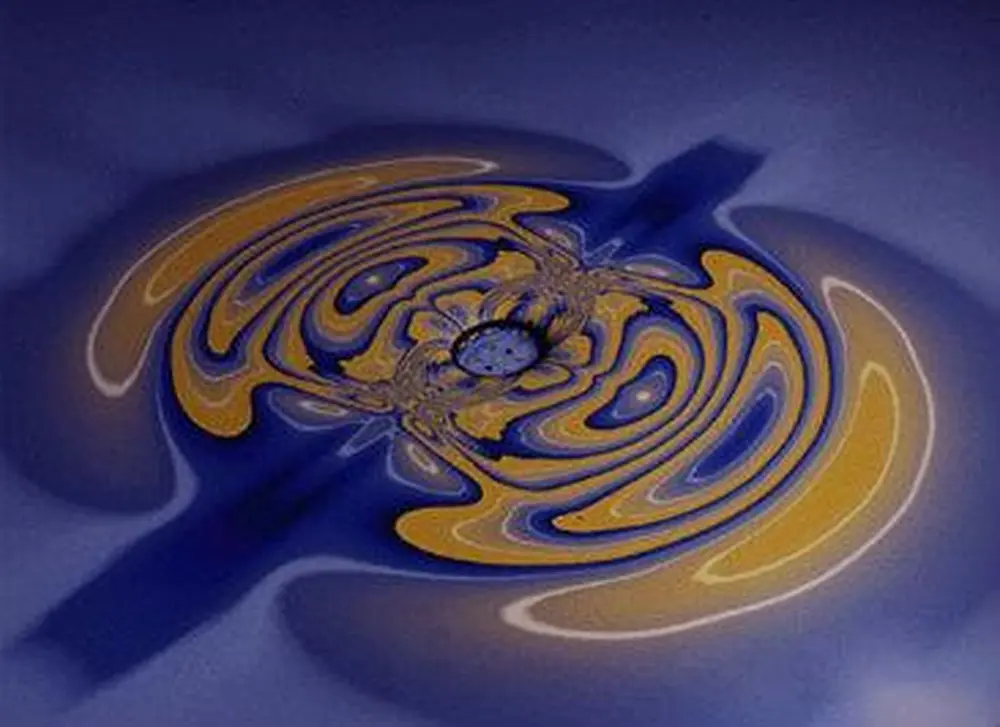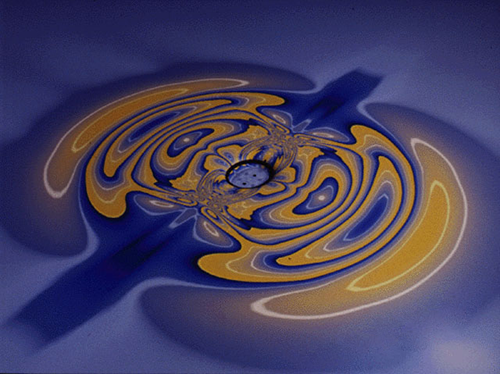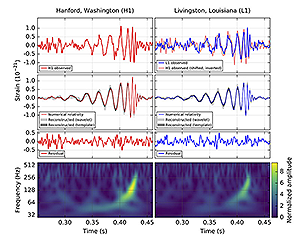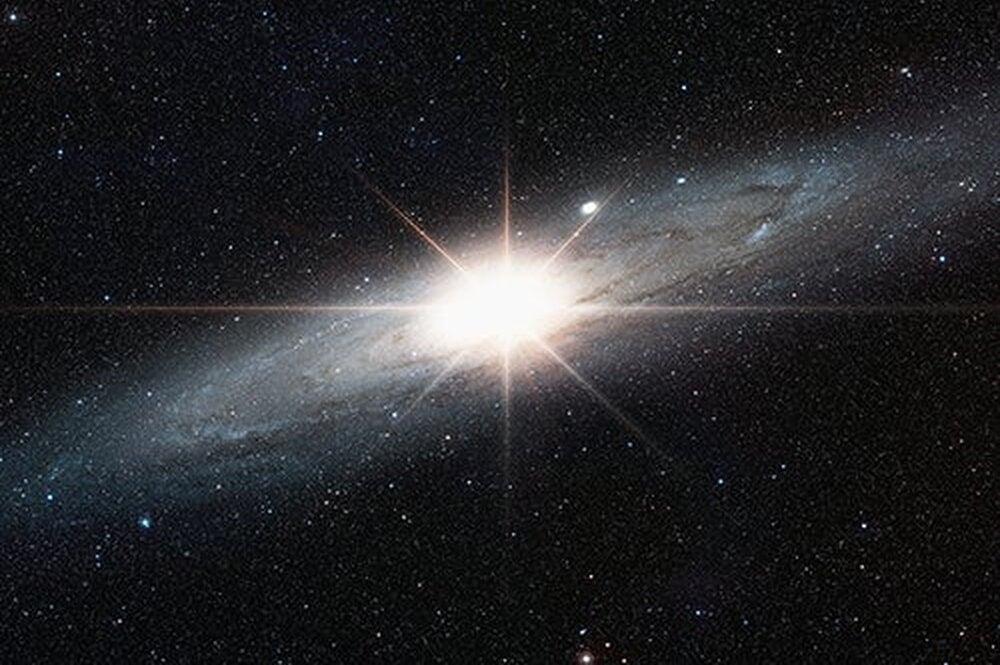

When scientists recently announced that they observed ripples in the fabric of spacetime called gravitational waves, thus confirming a major prediction in Albert Einstein’s 1915 general theory of relativity, astronomers and physicists at Illinois were electrified with excitement—and not just because a new window was opened into the universe. Illinois also had much to do with the discovery.
Thirty years ago, the National Center for Supercomputing Applications (NCSA) was founded at Illinois by Larry Smarr based on the premise that numerically modeling scientific problems, such as the colliding of black holes, required high-performance computing to make progress. Smarr, a physicist who won the Golden Goose award in 2014, formed a numerical group, led by current NCSA director and astronomy professor Edward Seidel, that quickly became a leader in applying supercomputers to black hole and gravitational wave problems.
Gravitational waves carry information about their dramatic origins and about the nature of gravity that cannot otherwise be obtained. In the recent discovery, physicists concluded that the detected gravitational waves were produced during the final fraction of a second of the merger of two black holes to produce a single, more massive spinning black hole. This collision of two black holes had been predicted but never observed.
The gravitational waves were detected on Sept. 14, 2015, by both of the twin Laser Interferometer Gravitational-wave Observatory (LIGO) detectors, located in Livingston, La., and Hanford, Wash. While the LIGO observatories were conceived, built and operated by Caltech and Massachusetts Institute of Technology (with support from National Science Foundation), NCSA worked with several groups addressing models of gravitational waves sources seen by LIGO in this discovery.
NCSA has also played a role in developing the tools needed for simulating relativistic systems. The work of Seidel’s NCSA group led to the development of the Cactus Framework, a modular and collaborative framework which has supported numerical relativists and others developing applications to run on supercomputers at NCSA and elsewhere.
Built on the Cactus Framework, the NSF-supported Einstein Toolkit developed at Georgia Tech, Rochester Institute of Technology, Louisiana State University, American Enterprise Institute, Perimeter Institute and elsewhere now supports many numerical relativity groups modeling sources important for LIGO on the NCSA Blue Waters supercomputer.
“This historic announcement is very special for me,” said Seidel, also Founder Professor of Physics. “My career has centered on understanding the nature of black hole systems, from my research work in numerical relativity, to building collaborative teams and technologies for scientific research, and then also having the honor to be involved in LIGO during my role as NSF assistant director of mathematics and physical sciences. I could not be more excited that the field is advancing to a new phase.”
Gabrielle Allen, professor of astronomy at Illinois and NCSA associate director, previously led the development of the Cactus Framework and the Einstein Toolkit.
“NCSA was a critical part of inspiring and supporting the development of Cactus for astrophysics. We held our first Cactus workshop at NCSA and the staff’s involvement in our projects was fundamental to being able to demonstrate not just new science but new computing technologies and approaches,” said Allen.

Stuart Shapiro, a professor of physics and astronomy at Illinois, was appointed an NCSA research scientist by Smarr two decades ago. A leading expert in the theory that underpinned the search for gravitational waves, he has developed software tools that can simulate on NCSA supercomputers like Blue Waters the very binary black hole merger and gravitational waves now detected by LIGO. Shapiro said he is thrilled by the discovery.
“This presents the strongest confirmation yet of Einstein’s theory of general relativity and the cleanest evidence to date of the existence of black holes. The gravitational waves that LIGO measures can only be generated by merging black holes—exotic relativistic objects from which nothing, including light, can escape from their interior,” said Shapiro.
Eliu Huerta, who leads the Relativity Group at NCSA, has been a member of the LIGO Scientific Collaboration, a group of more than 1,000 scientists from universities around the world which made the recent discovery, since 2011. He is a co-author of the paper documenting the discovery to be published in Physical Review Letters.
Huerta works at the interface of analytical and numerical relativity, specializing in the development of modeled waveforms for the detection and interpretation of gravitational wave signals. Huerta uses these models to infer the astrophysical properties of compact binary systems, and shed light on the environments in which they form and coalesce.
“The first direct observation of gravitational waves from a binary black hole system officially inaugurates the field of gravitational wave astronomy,” Huerta said. “There can be no better way to celebrate the first centenary of Einstein’s prediction of gravitational waves. We can gladly say that Einstein is right, and that the beautiful mathematical framework he developed to describe gravity is valid even in the most extreme environments. A new era has begun, and we will be glad to discover astrophysical objects we have never dreamt of.”
Other contributors to the discovery include Illinois alumna Vicky Kalogera (PhD, ’97, astronomy), a professor of astronomy and physics at Northwestern University who is a major figure at LIGO and was mentioned during the press conference announcing the historic observation. The recent discovery is also the most direct proof of the existence of black holes, which are the main focus of several in the astronomy department.
Peter Schiffer, vice chancellor for research at Illinois, said work at NCSA has helped “open windows into the universe.”
“This is a wonderful fundamental discovery, and it’s exciting that the high performance computing capabilities that we developed to address challenges like this one are also being used to solve other significant societal problems,” Schiffer said.
Watch a video of former NCSA Director Larry Smarr and current NCSA Director Ed Seidel discussing their work on colliding black holes.


